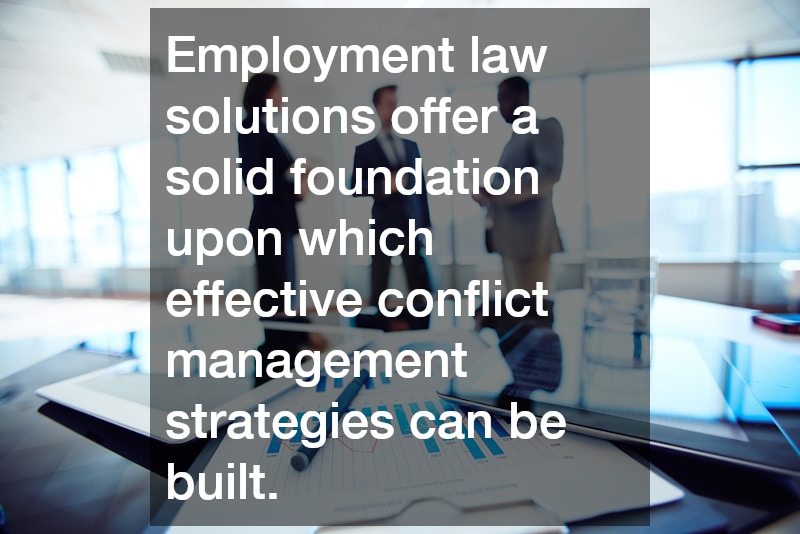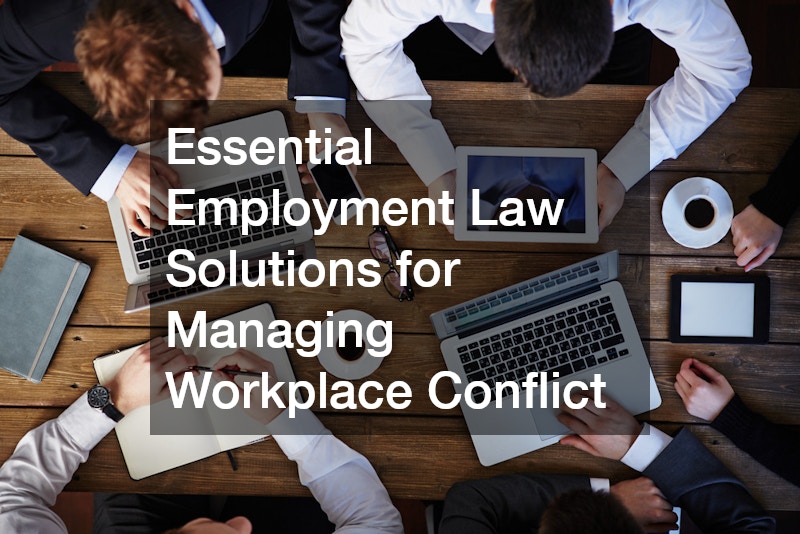The modern workplace is a dynamic environment where various personalities and interests converge. This convergence often leads to clashes that can disrupt productivity and employee morale. Managing these conflicts effectively is crucial for the smooth operation of any organization. Employment law solutions offer structured mechanisms through which workplace conflicts can be resolved, ensuring legal compliance and fairness. Understanding these solutions is imperative for employers and HR professionals to foster a healthy work environment.
Workplace conflicts can arise from numerous sources, such as discrimination, harassment, or even simple misunderstandings. These conflicts, if left unaddressed, can escalate, leading to decreased employee satisfaction and potential legal issues. Employment law solutions, therefore, serve as a proactive tool to preemptively address these issues, allowing organizations to focus on their primary objectives. By integrating comprehensive legal frameworks with conflict management strategies, businesses can protect themselves and their employees.
The Importance of Comprehensive Employment Contracts
An essential employment law solution for managing workplace conflict is the establishment of comprehensive employment contracts. Such contracts clearly outline the roles, responsibilities, and expectations of each employee, setting a benchmark for performance and behavior. This clarity helps in reducing misunderstandings regarding job duties and organizational expectations. Moreover, employment contracts often include clauses pertaining to conflict resolution, outlining the process for addressing grievances. By including these components, employers can ensure a structured approach to managing disputes.
Employment contracts serve as a primary reference point during conflicts. When disputes arise, these documents can be consulted to verify the agreed terms and obligations. This reduces the potential for ambiguity, thereby streamlining the resolution process. Furthermore, these contracts should be continually reviewed and updated to reflect any changes in the workplace or legal requirements. This practice reinforces the organization’s commitment to fairness and legal adherence, preventing potential disputes by addressing issues proactively.
The Procedure for Implementing Structured Dispute Resolution Mechanisms
Structured dispute resolution mechanisms are another vital employment law solution to address workplace conflicts. Establishing clear procedures for handling grievances ensures that conflicts are resolved fairly and efficiently. This process typically involves several steps, such as reporting the grievance, investigating the claim, and facilitating mediated discussions if needed. A formalized approach not only aids in expeditious conflict resolution but also underscores the organization’s commitment to treating all concerns with the seriousness they deserve. Additionally, it establishes a standard that can be consistently applied across the organization.
The availability of structured dispute resolution mechanisms provides employees with a secure avenue to voice their concerns. This can prevent workplace conflicts from festering, thus mitigating the risk of escalation. Moreover, having a standard procedure in place promotes transparency and fairness, as all parties involved understand the steps and outcomes associated with the process. Implementing these mechanisms also involves regular training for HR personnel to handle disputes with sensitivity and impartiality. Such training is essential to maintaining the integrity of the resolution process.
The Role of Training and Awareness in Conflict Prevention
Training and awareness programs are integral components of an effective employment law solution against workplace conflict. Educating employees about acceptable behaviors, company policies, and conflict resolution procedures is vital. Such programs empower employees to navigate interpersonal dynamics and manage disputes independently. Awareness initiatives can also address unconscious biases and promote inclusivity, thereby minimizing potential conflict sources. Through regular training, organizations reinforce a culture of respect and collaboration.
The importance of continuous training cannot be overstated, as it equips employees with the skills needed to manage conflict constructively. These programs should be comprehensive and involve all levels of the organization, from leadership to entry-level staff. By participating in such training, employees can develop better communication, negotiation, and empathy skills, all of which are crucial in mitigating conflicts. Programs can also include simulations and role-plays to prepare employees for real-life conflict scenarios they might encounter. Ensuring that these trainings are up-to-date and reflective of current laws and policies is crucial for their success.
Ultimately, employment law solutions offer a solid foundation upon which effective conflict management strategies can be built. By understanding and utilizing these tools, organizations are better equipped to handle the inevitable challenges of the modern workplace. As workplaces continue to grow in diversity and complexity, the strategic integration of these solutions will be crucial. The legal landscape may evolve, but the core principles of fairness, transparency, and respect will remain timeless keys to successful conflict management.
.




